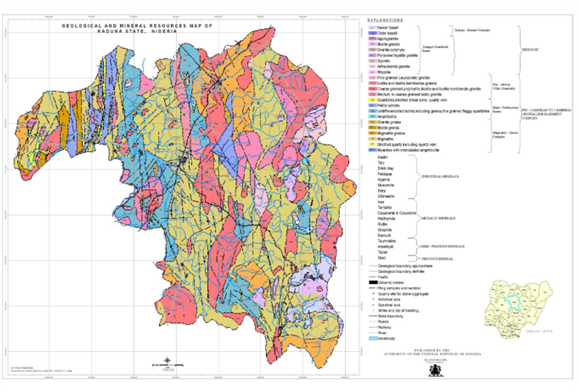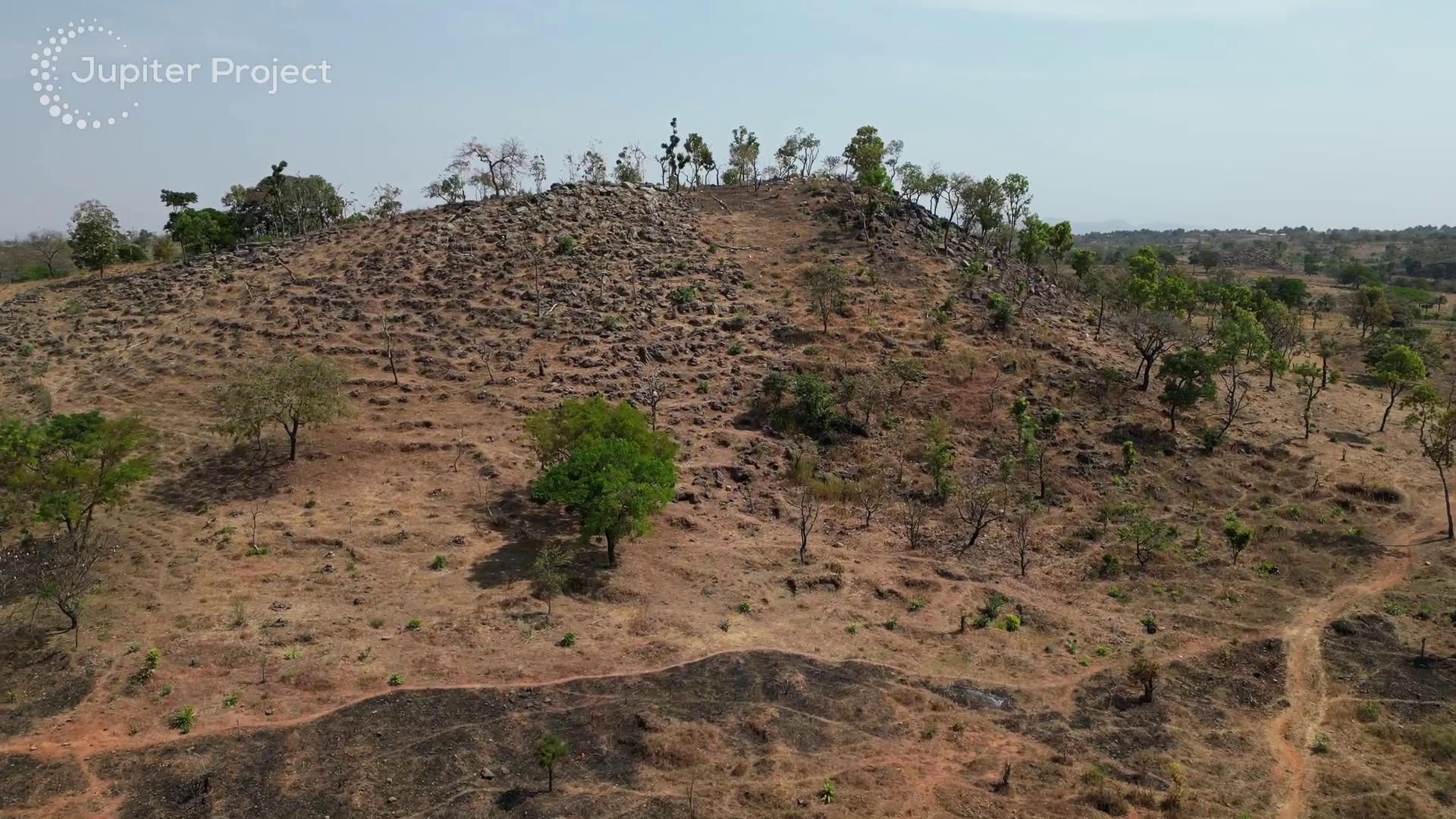As Nigeria’s first Tier One mining resource, Jupiter Project will bring global significance to Nigeria, opening new horizons for the country and the attention of the world.
This discovery has the potential to make Nigeria a major supplier of high-grade ore to the global Lithium battery market.
Located in the heart of the nation, Kaduna this 462sq km Jupiter Lithium Project is a cooperative venture between two companies – Basin Mining and Range Mining
The original discoveries by this joint venture rapidly moved from exploration to the commencement of mining.

The companies have commenced mining activities. As the Lithium deposits are surface outcrops 40-70m high, initial mining is very much like a quarrying operation. The initial mining program using contract mining will target the Lithium and critical minerals deposits which are a much more straight forward process than the Nickel while work continues on the Nickel metallurgy.
Production levels from these contracted mining works across only four of the 29 identified targets are expected to reach approximately 50,000 tonnes per month by the end of Q4 2023. The independent contractors are expected to use one of five independent concentrator plants already operating nearby to the site with reported capacities of 100,000 tonnes feed per month each to produce a 6% S.C. product initially for export.
To promote and develop Nigeria’s mining industry, wherever possible the Jupiter Project will source heavy equipment and mining services from local suppliers. In keeping with our Community Development Agreement, we will draw on the host communities for local labour in an effort to re-skill local and regional communities as well as directly injecting funds into the local economy.
We have maintained cordial relations with the local communities where we have undertaken a range of community projects including school construction, water bores, agricultural support and education scholarships. The companies have engaged in the community projects for the last six years before commencement of mining. It is highly unusual for mining companies to implement community projects during the exploration stage where the risk of success is relatively low. However, our board has taken the view that as this project is early in the life of Nigeria’s modern mining dispensation it is important to set the bar high for other companies to follow.
A minerals project of such outstanding potential, as is to be found in the Jupiter Project, will be a major step in diversifying Nigeria’s economy, bring world attention and significant economic development to Kaduna State.
Geology

A wide range of metallic and industrial mineral deposits are already known, but the Companies believe the potential for undiscovered deposits is significant. The known mineral resources of Kaduna State include gold, tin (cassiterite-columbite), tantalite, iron, wolframite, rutile, bismuth and a range of industrial minerals (graphite, kaolin, talc, brick earth, feldspar, kyanite, sillimanite, and muscovite) and semi-precious gemstones including beryl.
Obaje (2009) also shows a figure with the known mineral occurrences throughout Nigeria. He records the following mineral occurrences in Kaduna State: bismuth, cassiterite, chromite/nickel, columbite, gemstones, gold, ilmenite, kyanize, rutile, talc, tantalite, and wolframite (and kimberlites immediately north of Kaduna State).
Each of the three lithological units recognised in the Pan-African basement are potential targets for metallic mineralization and the ductile shear systems that cut across all three units are major targets for gold and base metal mineralization.
The tin mineralization is hosted by greisen veins and stockworks in pluton roof zones which have undergone shallow erosion producing rich alluvial placers. However, most of Nigeria’s tin production has been derived from placer concentrations; it is rarely mined from primary sources. Other locally associated commodities include wolframite, columbite-tantalite, pyrochlore, molybdenite, beryl and gemstones (topaz, aquamarine and emerald).

Rare-metal pegmatites in Central Nigeria are closely associated with late Pan African peraluminous granites. These complex bi- and tri-zoned mineralized pegmatites have been classified into Be-, Li-Be, and Li-Cs-Be-Ta (LCT) types (Akintola and Adekeye, 2008).
The Be-, and Li-Be-types are highly prospective for gem tourmaline, beryl and columbite whilst the most evolved pegmatites in this area are good candidates for tantalite, amblygonite-montebrasite, and probably pollucite prospecting/mining. Bowden and Kinnaird (1984) suggest that there are two generations of pegmatites: one group associated with the Older Granites and another group of Ta-rich pegmatites that are up to 100 million years younger.
Superficial deposits derived from the Younger Granites are targets for placer deposits (again as mined in the Jos area). Elsewhere in the State other superficial deposits are being locally worked by artisanal miners for alluvial gold.
As well as hosting gold, the shear-controlled quartz veins of western Nigeria also host base metals, notably lead, but also copper and zinc. Small scale mining of these quartz veins for base metals is already being carried out by artisanal miners. However, again there has been no modern systematic exploration along the shears for major base metal deposits.
The geochemical mapping in the area SSW of Kaduna City detected columbite, wolframite and anomalous lead-zinc values. The lead-zinc anomaly coincides with the outcrop of a ductile shear zone with visible galena (and minor chalcopyrite) mineralization in quartz veins.
Chromite/nickel occurrences are known in the northern part of Kaduna State. The mineralization is in mafic/ultramafic rocks in the schist belts.
Older crust (within the migmatitic gneisses) is reworked in the orogens (e.g. Wright et al., 1985) and the older rocks are potential source for precious and base metals. For example, similar older rocks in other Pan-African belts are host to Mesoproterozoic Cu porphyries that are economic targets in their own right (e.g. in Zambia where they underlie the Cu-Co bearing sedimentary strata in the lower part of the Katanga Supergroup).
